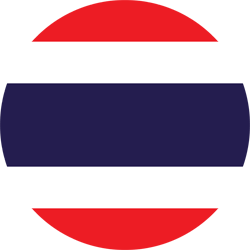Employing in Taiwan
Employment in Taiwan is primarily governed by the Labour Standards Act (LSA), which sets the minimum terms and conditions for employment, including working hours, rest days, overtime pay, paid leave, and minimum wage.
Onboarding time
Minimum Wage
Employer costs
Employee costs
Onboarding time
Team APAC can onboard your talents within an average of 120 hours.
Minimum Wage
As of January 1, 2025, Taiwan’s minimum wage is NT$28,590 per month or NT$190 per hour.
Employer costs
- General Labor insurance – 8.05%
- Employment Labor insurance – 0.70%
- Vocational Disaster Labor insurance – 0.25% (varies by company)
- Wage fund Labor Insurance – 0.025%
- National Health Insurance – 4.83912%
- Pension (Labor Pension Act) – 6.00%
- Supplementary National Health Insurance contribution – 2.11% (applicable to employees earning above TWD 219,500/month)
- Disability Employment Levy – Estimated: TWD 186
As of October 1, 2024, employees with children aged between 0 and 6 years are eligible to receive a childcare allowance of TWD 10,000 per child per year, to be paid annually in October of each year.
Employee costs
- Labor Insurance – 2.5%
- Health Insurance – 1.55% (applicable to income between TWD 28,590 and TWD 313,000)
- Employment Insurance – 0.20%
Payroll
The payroll process in Taiwan involves calculating net salary by deducting gross deductions, such as withholding taxes and social security contributions, from the gross salary, which includes regular income, allowances, and bonuses.
Payroll cycle
The payroll cycle is typically monthly, with salaries disbursed on the 15th of each month.
Payroll calculations
Employers must adhere to Taiwan’s payroll regulations, which mandate contributions to Labor Insurance, Health Insurance, Employment Insurance, and Pension Funds, with specific rates for both employers and employees.
Compliance requirements
Employers must file payroll taxes with the National Taxation Bureau by May 31st of the following year and ensure compliance with labor laws, including providing payslips that detail taxable income, social security, and other deductions.
Additional payments
13th Salary
The 13th-month salary is not mandatory in Taiwan. Employers, however, often provide a 13th-month salary during the Lunar New Year. If offered, the amount is usually equivalent to one month’s salary and is subject to standard income tax and social insurance deductions.
Bonuses
In Taiwan, bonuses are not mandatory unless explicitly stipulated in an employee’s contract. The 14th-month bonus, often given during other festivals like the Dragon Boat Festival or Mid-Autumn Festival, is also not obligatory.
Commissions
Sales roles and other performance-based positions often include commissions as part of their compensation structure.
Other allowances
Typical allowances given to employees are for housing and meals.
Ready to Hire with Team APAC?


Taxes
In Taiwan, employee income taxation is based on residency status and the source of income. Resident individuals are subject to progressive tax rates while non-resident individuals residing in Taiwan for less than 90 days are subject to an 18% withholding tax on salary from Taiwan-registered entities, while those staying between 90 and 183 days face a flat 18% tax on Taiwan-sourced income.
Additionally, Taiwan imposes an Income Basic Tax (IBT) at a flat rate of 20% on residents with foreign-sourced income exceeding TWD 1 million and basic income above TWD 7.5 million.
Employee Income Tax
The tax rates are progressive, ranging from 5% to 40%, depending on taxable income, which is calculated by subtracting standard, special, and personal exemptions.
Income Tax
- 5% 0 TWD – 590,000 TWD
- 12% 590,001 TWD – 1,330,000 TWD
- 20% 1,330,001 TWD – 2,660,000 TWD
- 30% 2,660,001 TWD – 4,980,000 TWD
- 40% 4,980,001 TWD and over
Employment eligibility
When an expatriate employee is posted to Taiwan, the employer must obtain a work permit (valid for up to five years) on the employee’s behalf, and the employee must obtain a visa from a representative office in the home country or (if already in Taiwan) from the Bureau of Consular Affairs.
Employers can only hire foreign workers if they have been unable to find sufficient numbers of local nationals to meet their recruiting needs.
Visa
Taiwan offers several types of work visas, including the Standard Work Visa, Employment Gold Card, Entrepreneur Visa, and Working Holiday Visa, each catering to different professional needs. To obtain a work visa, foreign nationals must secure a work permit from their employer, which is typically granted to professionals in specific industries such as engineering, healthcare, and academic research. Applicants must also have a valid job offer, a bachelor’s degree or equivalent experience, and at least five years of relevant work experience. The Employment Gold Card simplifies the process for high-level professionals by combining work permit, resident visa, and reentry permit into one document.
Once the work visa is granted, the individual must apply for an Alien Resident Certificate (ARC) within 15 days to legally reside in Taiwan for more than 180 days. The entire process is regulated by Taiwan’s Ministry of Interior and the National Immigration Agency.
Visa types
- Working Holiday Visa
- Resident Visa
Compliance requirements
- Completed and signed application form
- 2 passport-sized photos taken within the past 6 months
- A passport valid for at least 6 more months with at least 3 blank pages
- A health certificate issued in the past 3 months
- Any additional documents based on profession
- A work permit (every employee must obtain a work permit before issuance of a visa).
Background check
In Taiwan, background checks are a critical component of the work visa application process, particularly for obtaining an Alien Resident Certificate (ARC). Applicants are typically required to provide a nationwide criminal record certificate from their home country, such as an FBI clearance for U.S. citizens, which must be issued within the last year and include records from the past five years. This document must often be accompanied by a Chinese translation and verified by the relevant authorities, such as the ROC’s overseas missions or the Ministry of Foreign Affairs. Additionally, employers in Taiwan must adhere to strict data protection laws, including the 2023 Personal Data Protection Act, which mandates obtaining explicit consent from candidates before conducting any background checks.
We can help you! Contact us!
Benefits
In Taiwan, employee benefits are governed by a comprehensive framework of mandatory and optional provisions designed to ensure financial security and workplace stability. Mandatory benefits include social security programs, unemployment support, and medical coverage. Employers are also required to provide minimum wage, annual paid leave, maternity leave and sick leave. Additionally, Taiwan’s labor laws mandate contributions to pension funds and health insurance, with employers typically covering a significant portion of these costs. Optional benefits often include housing allowances, meal subsidies, transportation allowances, and supplementary insurance plans.
Private health insurance
Employers offer private medical insurance coverage to provide additional benefits and flexibility in healthcare choices.
Team APAC providers
- SafetyWings
- Henner
- IMG/ ALC Global
Mandatory benefits
Key statutory benefits include Labor Insurance (LI) and Employment Insurance (EI), which cover a range of protections including retirement benefits, unemployment support, and medical coverage.
Mandatory benefits in Taiwan
- Labor Insurance (LI)
- Employment Insurance (EI)
Working hours
The standard workweek is 40 hours, the standard workday 8 hours. Every employee is entitled to a break of at least 30 minutes after working four continuous hours. The break can be rescheduled if work cannot be interrupted.
Working hours per day
Standard working hours are 8 hours per day. The standard workweek is from Monday to Friday.
Working hours per week
The standard workweek is 40 hours.
Overtime pay
Overtime payment is not mandatory. Overtime can be agreed upon between an employer and employee in an employment agreement.
Leave
Employers are also required to provide annual paid leave, maternity leave (eight weeks at full pay), and sick leave (up to 30 days annually, with 15 days fully paid).
Annual leave
Employees who have worked for the same employer for at least a year are entitled to paid annual leave based on their years of service, starting with three days’ leave for those with at least six months but less than one year of service, increasing to seven days after 12 months, 10 days after two years, 14 days after three years, and 15 days after five years, with an additional day of leave granted for each year of service over 10 years, up to a maximum of 30 days’ leave. In the event of an emergency, an employer may suspend a worker’s planned leave but must compensate the employee with double their regular wages for work during that period and ensure the leave is granted once the emergency has concluded.
Sick leave
Regular sick leave may not exceed 30 days in one year. If the employee is hospitalized, he or she is entitled to unpaid sick leave of up to one year in any two years. The employee is paid half his or her regular salary during the 30 days’ leave, either from the government’s labor insurance fund alone or in part from the fund and in part by the employer. If the employer does not pay for sick leave, payment from the government’s labor insurance fund begins on the fourth day of sickness.
Parental leave
Parents can apply for up to two years of unpaid parental leave before their child reaches the age of three, provided they have worked for at least six months and their spouse is also employed. During this leave, they may receive a parental leave allowance of 80% of their insured salary for up to six months.
Paternity leave
An employee whose spouse is in labor is entitled to seven days off as paternity leave.
Maternity leave
Eight weeks’ maternity leave is mandatory for full and part-time employees. A woman who has been employed for more than six months is paid her regular wage during maternity leave. If she has been employed less than six months, she is paid at half her regular wage. In addition, a maternity grant equal to one month’s earnings is paid following the birth of the child.
Pregnant employees must be granted five days of leave for pregnancy check-ups, during which regular wages must be paid. An employee with a child under the age of 1 is entitled to two 30-minute rest periods with pay to breast-feed her baby. Employees with children under the age of 3 and with more than one year of service may take unpaid parental leave for up to two years.
Other types of leave
In Taiwan, marriage leave is a statutory benefit provided under the Labor Standards Act. Employees are entitled to eight days of fully paid wedding leave upon getting married. This leave is intended to be used within three months from the date of marriage. In addition, female employees are entitled to one day of menstrual leave per month, which is partially paid, with employees receiving 50% of their regular wage for the day off.
Bereavement leave
Employees are entitled to 8 days of paid leave for the death of a parent, spouse, or child. For the death of grandparents, siblings, or parents-in-law, employees are entitled to 3 days of paid leave
Family & domestic violence leave
In Taiwan, there is no specific mandatory leave provision explicitly designated for family or domestic violence under the current labor laws. However, employees may utilize other types of leave, such as sick leave or compassionate leave, to address situations arising from domestic violence.
Termination
Termination must comply with strict legal conditions, and employers must adhere to redundancy and dismissal protocols, including providing notice and severance pay. Employee dismissal must be according to the Labour and Standards Act (LSA).
Termination process
In Taiwan, the termination process is strictly regulated by the Labour Standards Act (LSA), which outlines specific grounds for both voluntary and involuntary termination. Employers can terminate employees only under statutory conditions specified in Article 11 (layoff with notice and severance pay) or Article 12 (dismissal without notice or pay) of the LSA. Employers must provide prior notice for layoffs, calculate and pay severance based on years of service, and document the termination process thoroughly to avoid disputes.
Termination reasons
Valid reasons for layoff include business suspension, operating losses, force majeure, workforce reduction due to business changes, or unsatisfactory job performance. For dismissal, grounds include misconduct, fraud, or serious breaches of employment terms.
Notice period
The minimum notice period starts at 0 days and increases based on the duration of employment, with no notice required for continuous employment of less than 3 months, 10 days for at least 3 months but less than 1 year, 20 days for at least 1 year but less than 3 years, and 30 days for employment of 3 years or more.
Severance Pay
Employees who started working prior to the implementation of the 2005 Labor Standards Act are eligible for a severance payment equal to one month’s salary for each year of uninterrupted service. Those who began their jobs after the Act came into effect are entitled to a severance package amounting to half a month’s pay for every year of continuous work.
Probation period
The length of the probation period can be agreed upon by the employer and the individual employee. A 3-6 months trial period is commonly used.
Probation Period days
- 90 days Minimum probation period
- 120 days Maximum probation period
Ready to hire in Taiwan?





